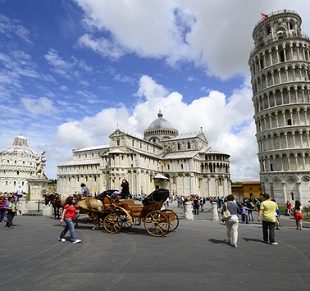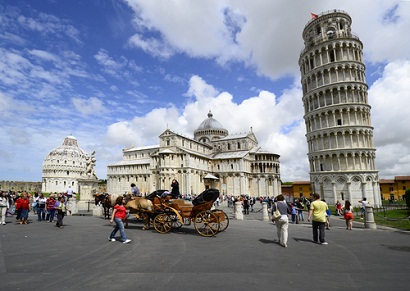
The Leaning Tower of Pisa – Europe’s best-preserved faulty building
The Leaning Tower of Pisa is without doubt one of the world’s most iconic and memorable buildings, famed predominantly for its awkward position, leaning precariously over to one side.
Any modern day building with a problem similar to this would have been knocked down long ago for health and safety reasons. Millions of Lira and, more recently, Euros have been spent on repair work on the Leaning Tower of Pisa, in order to stave off the inevitable.
For how many more years will this fascinating antiquity remain standing?
The problem is the tower lies in the sub-soil, which is much softer on one side than the other. By the time the second floor was under construction in 1178, the tower had begun to sink on one side. This fact did not deter the architects from proceeding onwards and, of course, upwards!
Nearly 100 years later, architect Giovanni De Simone added further floors and tried to compensate for the tilt by building the additional floors with one side higher than the other. This method only served to put a curve in the building and did nothing to get rid of the prominent tilt. In fact the higher they went, the more glaringly obvious the imperfection became.
The seventh floor was completed by Tommaso De Andrea Pisano in 1311 and the bell tower added towards the end of the 14th century, successfully fusing the unique Gothic and Romanesque elements of the building.
In more recent times the Nazis used the tower as an observation post during the Second World War. During the war, an American commander refused to order an artillery strike on the tower because he was so taken with the monument’s beauty.
At the turn of the last millennium work was carried out to shore up the building. Although the Italians do not want the tower to ever be straightened totally because its leaning element has extensively contributed to this iconic building’s world wide fame and popularity as a major tourist destination.



